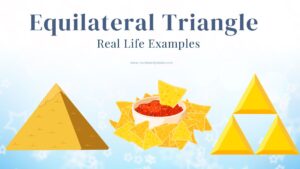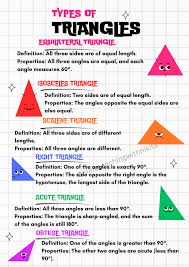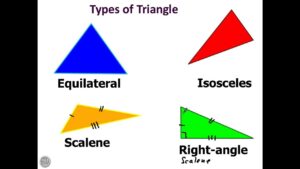Equilateral Triangle: A Simple Shape with Endless Possibilities
When Leila was ten, she spent most of her afternoons with her grandfather, a retired carpenter. He taught her how to use a ruler and compass, how to measure precisely, and how every strong design starts with a solid shape. One day, while tracing three equal lines on a piece of wood, he said, “This is the equilateral triangle, Leila. It’s the most honest shape I know—everything about it is equal.” That sentence stayed with her, long after the wood had turned to dust.
An equilateral triangle is a triangle in which all three sides are the same length, and all three angles are equal—each measuring exactly 60 degrees. It’s simple to draw but carries deep meaning in mathematics, design, and the natural world.
The Basic Beauty of the Equilateral Triangle
A triangle is the most basic polygon, and among its different types—scalene, isosceles, and equilateral—the equilateral triangle stands out because of its perfect balance. The word “equilateral” comes from Latin: aequus means “equal” and latus means “side.”
In geometry, the equilateral triangle is considered a “regular polygon,” meaning all its sides and angles are the same. This makes it incredibly useful in math, where symmetry and equality are key. It also makes it aesthetically pleasing, which is why it’s used so often in design and architecture.
But the real magic of this shape lies in how it appears in so many different parts of life—often without us noticing.
Equilateral Triangle in the Natural World
If you’ve ever looked closely at snowflakes or the structure of crystals, you might notice patterns that are made up of tiny equilateral triangles. This is because nature favors shapes that are efficient—shapes that use space well and distribute energy evenly.
For example:
-
Bees construct hexagonal honeycombs, and hexagons can be broken down into equilateral triangles.
-
Some leaf arrangements and seed patterns also form triangular grids.
-
Even some molecules in chemistry, like boron trifluoride, take the shape of equilateral triangles.
Nature chooses this shape not just for its looks, but because it works. It’s strong, stable, and symmetrical.
Strength in Simplicity: Engineering with Triangles
Have you ever noticed that bridges, towers, or roof trusses often include triangle shapes? Engineers love triangles because they don’t bend or collapse easily. Among all triangle types, the equilateral triangle is the most stable.
Imagine building a structure out of spaghetti sticks. If you build a square, it will wobble and twist. But a triangle holds firm. That’s because any force applied to a triangle is spread out evenly to all sides. This makes it perfect for construction.
The Eiffel Tower, radio masts, cranes, and geodesic domes all rely on the triangle’s strength. It’s especially useful in areas that face strong winds, earthquakes, or heavy loads.
The Equilateral Triangle in Art and Culture
People have been drawn to the triangle for thousands of years. In many cultures, the triangle is a symbol of balance and harmony. The equilateral triangle, with its perfect symmetry, has appeared in religious symbols, sacred geometry, and traditional art.
-
In Hindu and Buddhist mandalas, interlocking triangles represent male and female energies.
-
In Christian art, the triangle symbolizes the Holy Trinity.
-
In Celtic design, the triangle stands for life, death, and rebirth.
In modern times, graphic designers use equilateral triangles in logos to suggest clarity, stability, and innovation. For instance, the Google Drive and Delta Airlines logos both feature triangular shapes that catch the eye and create a sense of order.
Heading: Learning Geometry with the Equilateral Triangle
The equilateral triangle is often one of the first shapes introduced in school geometry lessons. Its simplicity makes it perfect for learning concepts such as:
-
Angle measurement – each angle is 60 degrees.
-
Symmetry – it has three lines of symmetry.
-
Congruence – all sides and angles are congruent.
-
Tessellation – equilateral triangles can tile a surface without leaving gaps.
Students can explore how these triangles fit together to form larger patterns—hexagons, stars, and even 3D solids like tetrahedrons. Learning with equilateral triangles builds a foundation for understanding more complex geometry later on.
A Story of a Tiny House and a Big Idea
Let’s return to Leila. Years after those afternoons with her grandfather, she became a sustainable home designer. One day, she was asked to design a tiny house that could be built quickly, use little material, and stand strong in high winds.
Instead of using rectangles or squares, she went back to what her grandfather taught her. She created a roof made of joined equilateral triangles. The result? A beautiful, light-filled space with a roof that needed no central support. It was strong, efficient, and affordable.
Her design was later used in rural areas hit by storms, where people needed homes that were easy to assemble and hard to break.
A shape that once fit in a child’s sketchbook had now changed lives.
The Triangle in Technology
Today, technology relies on the triangle more than ever. Computer graphics, for instance, often use “triangular meshes” to create 3D models. The triangle’s simplicity helps computers render complex shapes more efficiently.
Even in mobile phones and digital maps, data is sometimes divided into triangular sections to ensure accuracy and speed.
The equilateral triangle may seem like a basic shape, but it’s at the heart of advanced design, animation, and engineering.

conclusion
The equilateral triangle is more than a shape—it’s a symbol of balance, strength, and unity. It teaches us that even the simplest forms can carry the most meaning. Whether in nature, buildings, spiritual symbols, or digital worlds, it plays a quiet but powerful role.
It reminds us that perfection doesn’t always come from complexity. Sometimes, it’s found in the simplest things—three equal sides, three equal angles, and one powerful idea.
So next time you draw a triangle, pause for a moment. You might just be sketching the strongest, smartest, and most beautiful shape in the world.






